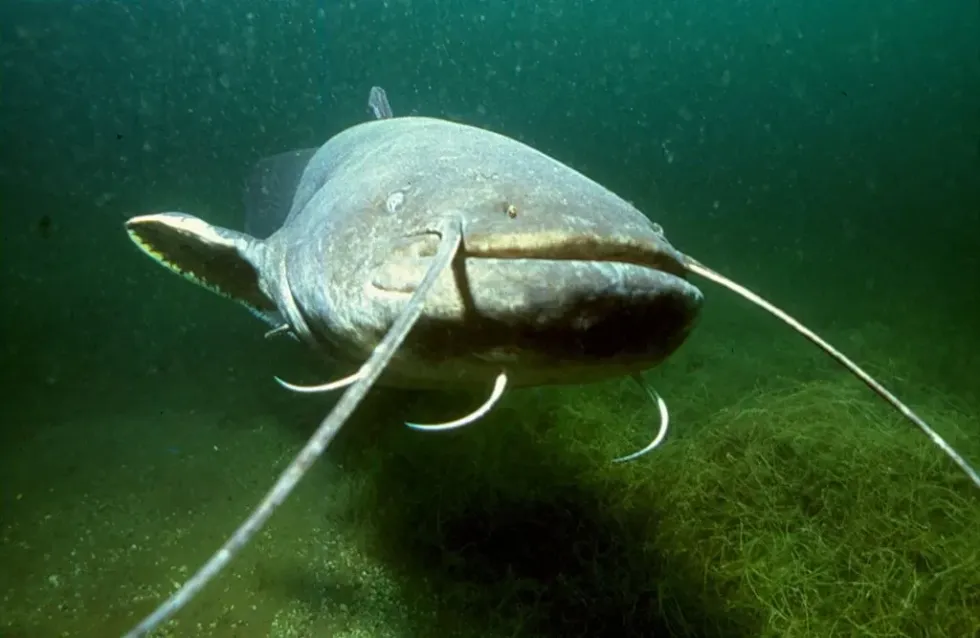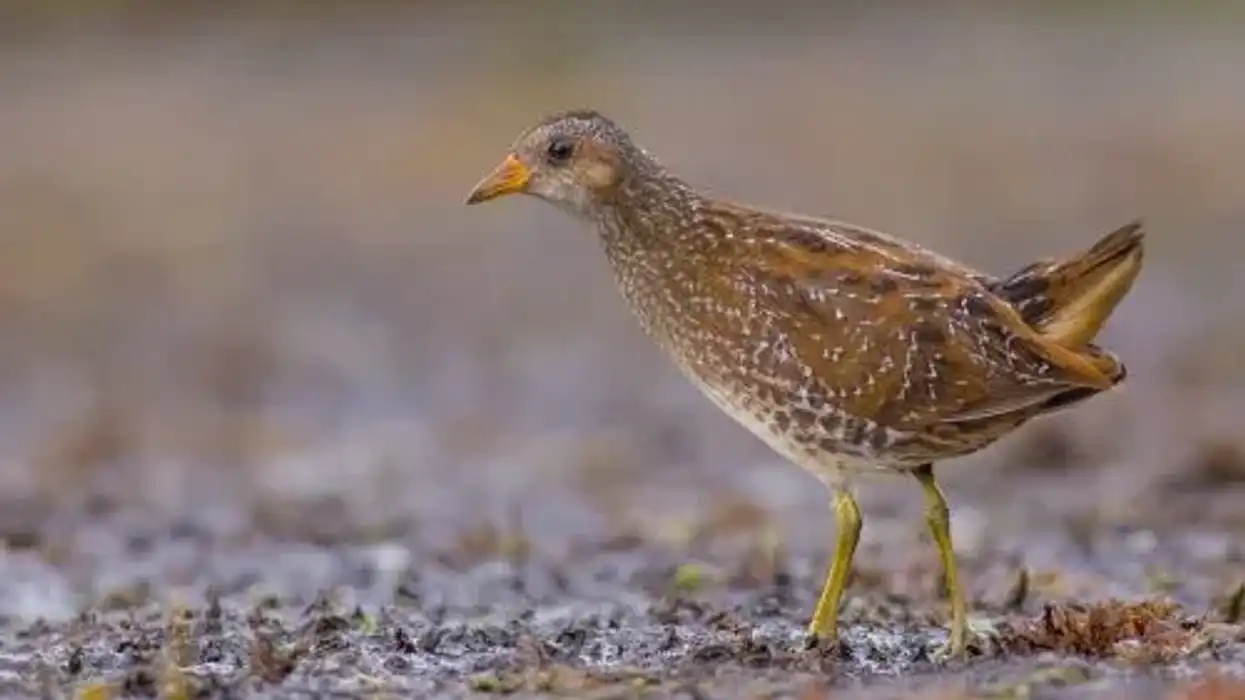Are you curious about the largest freshwater fish in the world? Then the wels catfish is the perfect fish for you.
Also called the European wels catfish, this European native fish has caught the attention of anglers and fishers worldwide. The wels catfish record exists for being one of the biggest, most dangerous freshwater fish you could have ever run into.
Endemic to European waters, you could also see this fish on the deltas, close to the sea, looking for more food before returning to their freshwater habitat.
But before you read on, beware! This is one dangerous fish and has had several records of eating humans and children whole.
They simply open their mouth and swallow them whole. Many owners have lost their pets, and many parents have lost their children to this dangerous creature.
They are also notoriously hard to catch, and very aggressive. On the TV Show 'River Monsters', when the host captured a wels catfish and let it go, the fish turned around and attacked the man! You too, can catch this fish, if you are brave enough.
All you need is a fishing rod, some bait (preferably smaller fish), and a sturdy boat that won't fall! With your fishing equipment, it's you against one of the most dangerous fishes of the freshwater.
Interesting, right? You can read all about this in this article, and more on the silver dollar and Cory catfish too.
Wels Catfish Interesting Facts
What type of animal is a wels catfish?
The wels catfish (Silurus glanis) is a type of fish.
What class of animal does a wels catfish belong to?
Like all other catfish populations, the wels catfish (Silurus glanis) belongs to the fish class.
How many wels catfish are there in the world?
Due to lack of research and their inaccessible habitats, there is no number on their populations. However, given how other populations of fish were declining, scientists have posited that they do not need to study in terms of population.
Where does a wels catfish live?
The wels catfish, also called the Silurus glanis, is found in freshwater lakes and rivers. Occasionally, you might spot them in oceans too (such as the Black and Caspian Seas).
They are particularly found in the brackish water of Eastern Europe, Southern Europe, and Northern Europe. Though they are native to Eastern Europe, they have been introduced as invasive species in other parts of Europe.
What is a wels catfish's habitat?
The wels catfish (with the scientific name Silurus glanis) lives at the bottom of rivers and lakes, hiding in sunken trees, caves, holes, and underwater caverns. They prefer warm water and slow-moving waters and come to the surface only to eat.
They find themselves at home in dark, small, and silty places, often hiding in silt and mud, emerging only at its mealtimes.
Who do wels catfish live with?
This species largely prefers living alone and comes together in groups and pairs only when mating. Staying alone helps the large catfish hunt easily and move through the water without any other predators or spooking away the prey.
How long does a wels catfish live?
The average life span of a wels catfish as a species is up to 50 years, but several cases have seen aging up to 80 years. These cases go back to their first discovery in the 1900s, where people have claimed to find fishes as old as 80 years old.
Though there is no scientific proof to back this up, it is not oo improbable. The fish do grow extraordinarily fast.
How do they reproduce?
The female lays eggs in a trough, and the male fertilizes them. The male then sits guard at the trough, waiting for the babies to hatch.
If the water level decreases too fast, you can see the male using his tail to keep the eggs wet. The female lays about 30,000 eggs per kilogram of body weight. This often averages to around 200,000 eggs.
What is their conservation status?
Thanks to its size, this species of fish has no natural predators in its habitat. Because of this, this fish is categorized as Least Concern. This fish is so strong that when introduced in the UK as an invasive species, they immediately caused a steep fall in other fishes living there, some of them nearing extinction.
Wels Catfish Fun Facts
What do wels catfish look like?
The wels catfish is the largest freshwater fish in the world. It has a body shaped like that of an eel, with mucus-covered skin and black eyes.
They have whiskers called barbels around their large mouth.
They can use these barbels like a tongue to feel around themselves as well as to smell any prey around them (two on each side of the upper jaw and four on each side of the lower jaw). They have no fin on top but only a dorsal fin and fin on either side to guide their movement.
How cute are they?
The wels catfish is the last fish you should be finding cute. This fish species is not cute at all and you would be better off seeking out smaller, more adorable, and colorful fish.
Even albino wels catfish is a poor sight to behold. They are held only rarely in aquariums for research purposes, and almost never in private homes because this species is not only dangerous to humans, but it also looks terrible while being so.
How do they communicate?
These creatures navigate the world around them by mostly sensing their way with predators, prey, companions, and more. The wels catfish communicates by producing a sound through its swim bladder. This amplifies sound vibrations, helping them communicate with other catfish.
How big is a wels catfish?
The wels catfish size can grow up to 10-16 ft, making them thrice as big as the average catfish. This allows this species to thrive in their habitat and stay at the top of their native range food chain.
In fact, the largest verified world record for the biggest wels catfish ever caught has been caught by Jonathan Avery, weighed a whopping 250 lb, and was more than 2.5 m. However, several records exist from the 1900s of wels catfish bigger than this.
How fast can a wels catfish swim?
Though they have not recorded the wels catfish and its swimming speed, it is assumed they are speedy swimmers to capture their prey animals. Since the water is slow, it does not hamper their speed and allows this creature to move through the water at speedy rates.
How much does a wels catfish weigh?
The average weight of this fish species is 5100-300 lb, but there have been frequent cases where they weigh up to 800 lb. In fact, the giant wels catfish world record was set by this fish. There have been stories of these creatures weighing up to 800 lb, although there is no proof for such claims.
What are their male and female names of the species?
There is no specific name for the males and females of this species of fish.
What would you call a baby wels catfish?
Though there is no specific name, some anglers have taken to calling the babies of this species kittens.
What do they eat?
They usually eat smaller fish, worms, bottom insects, and more. As this fish grows up and older, it starts to include prey like ducks, frogs, mice, and even fellow wels catfish in its diet. They have a huge mouth they use to eat. They open their large mouth and swallow their prey.
Are they eaten by humans?
No, they are not eaten by humans. Since they are at the top of the food chain, they carry the toxins of all the fish they have eaten, which can be poisonous to humans.
As they grow up, they get fatty, heavy, and start to taste poor once they grow up. Some people consider eating baby fish a delicacy, but such incidents are few and far between. The consensus is that humans should not eat them.
Would they make a good pet?
No. Please never, ever consider having the wels catfish as a pet.
Not only do they grow up to 10 ft regularly, which can be a chore to maintain, but their dietary and movement needs are also too extensive to keep up with. Also, anglers call it the "monster wels catfish" - a testament to their size and a reference to the wels catfish attacks on humans.
In fact, the wels has been known to attack and kill humans too, unlike other fish.
There was also an incident wherein there was a human body found inside a dead catfish. So it is a good idea to leave this species alone, and adopt a pretty goldfish instead.
Did you know...
One of the strangest places this animal has been found is in Chernobyl. The wels catfish, Chernobyl, live in the cooling pond of the power plant.
Many called it a mutant or a monster, but that is not true. The animal had always retained its size and seemed to be living a very healthy life in the cooling ponds. In fact, they also eat the bread that people drop for them in the cooling pond.
How does the wels catfish get its name?
The name "wels" comes from the German word for catfish. So, when we see it in context, the big wels catfish just means "catfish catfish." They are also called the sheatfish, the European catfish, and the Danube catfish. So much for unique naming, right?
Do wels catfish eat dogs?
Absolutely. Though this is not completely common, the huge wels catfish have eaten small and large dogs in the past, usually when they stray too close to them in freshwaters. The wels catfish attack humans as well with one notable case being the wels catfish Spain attack.
Here at Kidadl, we have carefully created lots of interesting family-friendly animal facts for everyone to discover! Learn more about some other fish, including blue catfish or channel catfish.
You can even occupy yourself at home by drawing one on our Wels catfish coloring pages.









